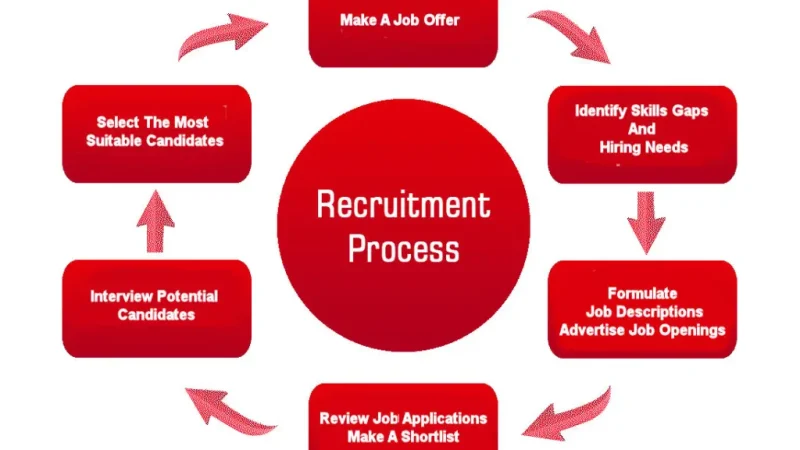How Lead Scoring Enhances Your Lead Nurture Program
An efficient lead nurture program is needed for relationship building to get prospects to become loyal customers in the competitive business milieu of today. However, not all leads carry equal value, and wasting marketing and sales energies on pursuing unworthy leads becomes an inevitable consequence. This is where lead scoring becomes an essential tool in directing the lead nurturing process toward a more precise, straightforward, and effectual endeavor.
Let’s examine how the adoption of lead scoring will increase the effectiveness of your lead nurturing strategy to ensure that your efforts are invested in the right prospects at the right times.
What is Lead Scoring?
Lead scoring is a system for ranking leads numerically based on some measurable criteria such as their activities and some basic information about them. The score helps determine which leads are more likely to be closed, thus allowing the sales and marketing departments to work with the most productive prospects. Knowing what stage of interest or readiness is each lead gives businesses the ability to focus their resources towards maximizing the effectiveness and efficiency of the lead nurture program.
Why Lead Scoring is Essential for Your Lead Nurture Process
1. Focus On Best Qualified Leads
Scoring leads can assist a business to discern the degree of likelihood of their leads converting into prospects. Criteria such as the level of engagement, job title, or even the size of the company can have scores assigned to them. This allows one to focus on the efforts that matter most. For instance:
Hot Leads: Prospects who have exhibited heavy interest, such as constant visitation of the website and downloading of materials.
Warm Leads: Leads that have shown some form of engagement but are not prepared to purchase.
Cold Leads: These are prospects that need to be cultivated more deeply.
Focusing on the highest-scoring prospects allows your sales team to better spend time and resources, ensuring that no effort is wasted.
2. Personalize Communication for Better Engagement
Engagement is amplified when communication is tailored to fit a target audience. Deep personalization encapsulates every effective lead nurture strategy. Through lead scoring, messages can be crafted and targeted based on the specific stage the potential buyer is in within the sales funnel. This fine level of personalization tends to increase engagement greatly.
- A lead that scores higher may be placed with tailored offers, demos, or consultations to increase nurturing.
- Weaker scoring leads may be nurtured with blog content or informative emails to help guide them through their buyer journey.
This communication aids in creating clearer interactions with the target audience which helps in increasing conversion rates.
3. Streamlined Marketing Expenditures, Resources and ROI
Clearly in the modern business environment, budgets are complicated to maximize, so every dollar put forth needs to be justified. Through effective lead scoring, marketing available resources get placed on the most qualified leads. Instead of wasting time on leads who don’t have any buying potential, your staff can now concentrate on nurturing and converting leads who have higher chances of buying. The result?
- Reduced waste: Marketing funds are spent judiciously.
- Higher ROI: Concentrating on premium prospects speeds up the sales cycle.
Such a strategy makes sure that the marketing team does not overwork and that resources are channeled where there is greater effectiveness.
4. Bridge the Sales and Marketing Divide
Sales and Marketing teams in many companies work independently, resulting in imprecise alignment. Lead scoring ensures that both marketing and sales teams are working towards the same objectives by clarifying which leads are ready to be contacted and which ones require additional nurturing.
- Sales: Engages with warm leads by utilizing the data driven lead priority and increases their success rate.
- Marketing: Works on the nurturing of lower-scoring leads and educating and guiding them towards the readiness to buy.
Having a common understanding increases collaboration between the two groups and makes it easier to hand over the accounts from marketing to sales.
5. Increase Effectiveness of Lead Segmentation and Targeting.
Identifying leads through scoring ensures that different classes of leads are effectively separated helping the business target them more precisely. This also helps in designing specific campaigns for these types of leads.
- Top tier leads: May receive exclusive product offers, invites to webinars, or consultations.
- Middle Tier leads: Could be sent more advanced and educational reads or offers to entice them deeper.
- Low Tier leads: Nurtured with general content or industry updates to maintain their attention.
This segmentation guarantees that each lead is catered to with relevant initiatives at each step of the buyer’s journey.
How to Implement Lead Scoring in Your Lead Nurture Strategy
With the knowledge of how lead scoring can facilitate your lead nurture process, let’s see how you are to incorporate it into your strategy properly.
1. Establish Criteria For Scoring Leads
To begin with, set the parameters for lead scoring. These usually comprise of the following:
- Demographic criteria: Job title, industry, company size, and location.
- Behavioral criteria: Visits to the company’s website, emails opened, forms that are filled out, content downloaded, social media engagement.
Each item in your scoring list must be given a number that reflects its importance to your sales process. For example, someone who downloads a whitepaper could get 10 points, while an individual requesting a demo gets 50 points.
2. Scoring Through Automation Using Various Tools
Automation, achieving higher efficiency in lead scoring, is essential. Some marketing automation tools such as HubSpot or Marketo have the deposition of automatically logging a lead’s activity and assigning scores depending on set parameters. This minimizes the amount of manual work required and enables the workforce to direct their attention to engaging with leads, as opposed to tending to data.
3. Regularly Review and Adjust Your Scoring Model
Lead scoring is not a one-time activity. For it to serve its purpose, the model has to be changed as the customers’ needs and preferences change. Make it a point to revisit the model routinely and interface with your sales team to determine, which leads are converting, and what actions correlate most strongly with the purchase intent.
4. Align Sales and Marketing Teams Around Lead Scores
It is important that both sales and marketing members adopt the lead scoring system. This cultivates teamwork and helps both departments appreciate the intricacies and priorities of the lead nurture process. While the marketing functions can modify their nurturing strategies to address lead quality issues, the sales teams can complement their nurturing approaches with lead quality input.
Important Points:
- By identifying leads that are most likely to close, lead scoring promotes efficiency within the sales team and ensures that the most valuable prospects are pursued.
- Much improved engagement and relationships results in a higher personalized communication, which enables enhanced conversations with the stakeholders.
- The use of lead scoring brings the sales and marketing departments closer together by fostering a common understanding of a lead’s worth.
- Specifics about a nurture campaign can be targeted by segmenting the leads, so that a particular message is sent to a specific group of leads.
- Through automation, lead scoring can be made to ease the tracking, scoring, and engagement of leads in a seamless manner.
Conclusion
For any successful lead nurture program, lead scoring should be considered at the top of the list as it is fundamental. When lead scoring is integrated into a marketing strategy, it enables the business to concentrate on the most valuable leads, tailor their outreach campaigns, allocate marketing resources more effectively, and improve the synergy between sales and marketing. What is the outcome? It increases the productivity of the entire lead nurture program, improves conversion rates, increases ROI, and improves relationships with customers, all fostering further business growth.
If you want to improve your lead nurture strategy, adding lead scoring is the next step toward long-term success.






